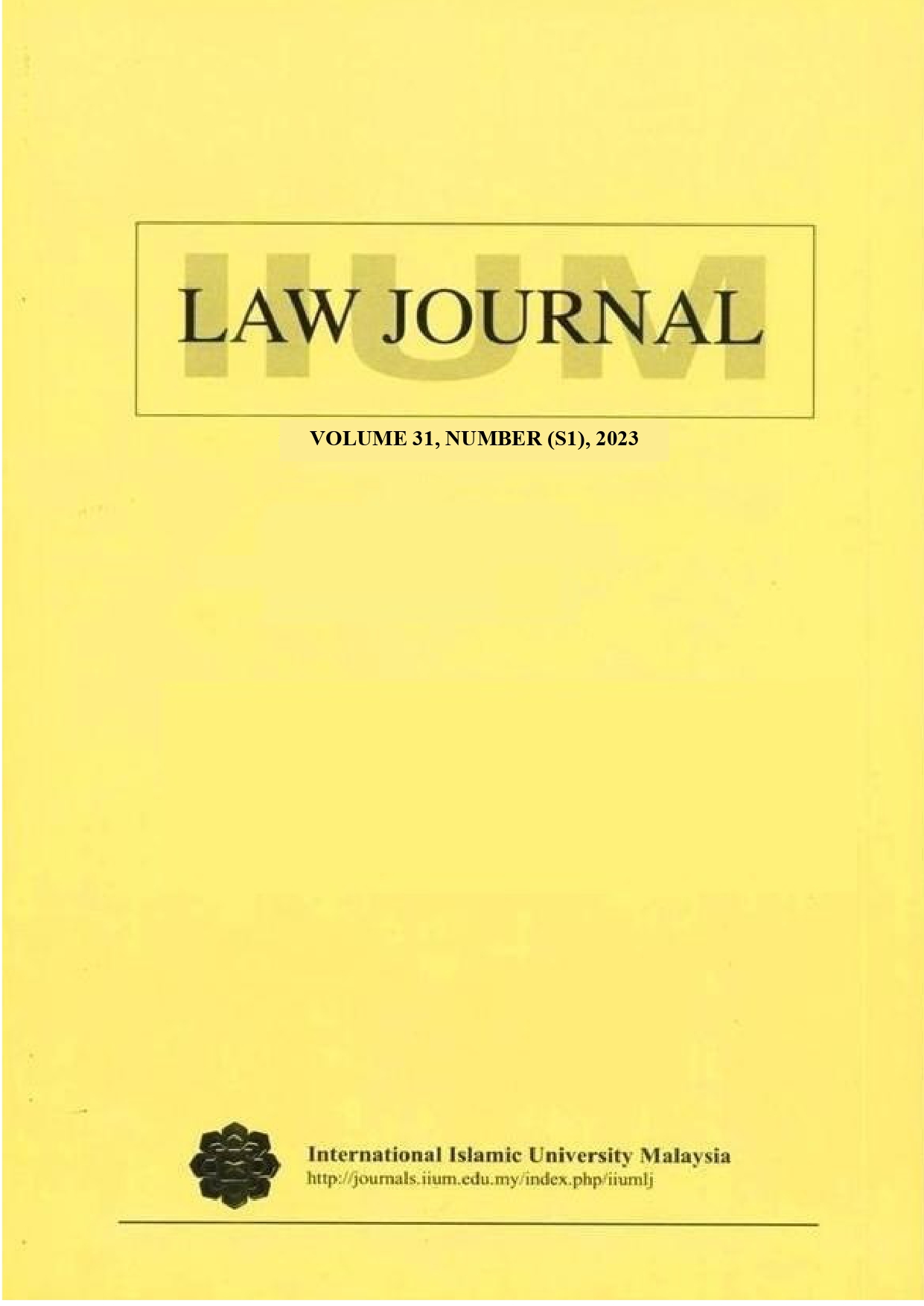THE STANDARD OF PROOF IN INQUESTS: LESSONS FROM MALAYSIA AND OTHER JURISDICTIONS
DOI:
https://doi.org/10.31436/iiumlj.v31iS1.873Keywords:
Criminal Procedure Code, Inquest, Inquiry of Death, Standard of Proof, Malaysia, Other JurisdictionsAbstract
An inquest, also known as inquiry of death in Malaysia, is governed by the Criminal Procedure Code (CPC). The main objective of an inquest is to investigate the cause of death. However, the lack of established procedures in Malaysia to guide coroners in conducting inquests has created many ambiguities. These ambiguities are demonstrated in numerous cases where decisions have been reviewed on a variety of grounds. One of the critical issues not addressed by the CPC is the standard of proof applicable in inquests. This article aims to study the correct standard of proof to be applied by the coroner at the end of an inquest proceeding. The focus is on the relevant standard of proof at the end of an inquest in Malaysia, the United Kingdom, and Australia. The research methodology is doctrinal legal research using comparative study. It is found that the standard of proof applied in Australia is settled, that is on the civil standard of balance of probabilities. The development of applicable standards of proof in inquests in Malaysia and the United Kingdom is observed in case law, which shows a shift from the criminal standard of proof to the civil standard of proof. The authors propose that specific legislation be enacted to govern the coroner’s court in Malaysia, in order to provide a clear and definitive legislative framework as well as guidance in the practice and procedure for coroners, including the issue of standard of proof.
Metrics
References
Chief Coroner, Guidance No. 17, Conclusions: Short Form and Narrative, Paragraph 26, accessed July 5, 2021, https://www.judiciary.uk/wp-content/uploads/2013/09/guidance-no-17-conclusions.pdf.
Chief Justice Federal Court Malaysia, Practice Direction No. 2 of 2019 – Pengendalian Laporan Mati Mengejut Dan Siasatan Kematian Oleh Mahkamah Sesyen Koroner, 8 March 2019 (“Practice Direction 2/2019”), 2.
Ismail, Noorfajri & Nurul ‘Ain Abdul Rahim. 2022. “Managing Coroner’s Court in Malaysia: Recent Development of Inquest Proceeding.” E-Journal of Economics, Entrepreneurship and Management Sciences 1(1): 52-62.
Matthews, Paul. Jervis on Coroners, 14th ed. (London: Sweet & Maxwell, 2019), para 13.67.
McGovern, Cliona. “The Coroner Service in Ireland – Time to Implement Change,” Medico-Legal Journal of Ireland 13 (2007). Gregory, M.J. Managing the homicide-suicide inquest the practices of coroners in one region of England and Wales. International Journal of Law, Crime and Justice (2014) 1-14.
Mustafa, Aminuddin and Moharani, Siti Nurul Aziera. “Pengendalian Inkues Kematian di Bawah Undang-undang Malaysia,” Kanun: Jurnal Undang-undang Malaysia 24, no. 2 (2012): 193-212.
“Publications,” Coroner Courts of Victoria, accessed June 26, 2021, https://www.coronerscourt.vic.gov.au/forms-resources/publications?page=1.
Ramalingam, Sheila, Johan Shamsuddin Sabaruddin, and Saroja Dhanapal, “The Language Of Justice In Malaysian Courts: The Law And The Reality,” IIUM Law Journal, 30, no. 2 (2022): 23–48, https://doi.org/10.31436/iiumlj.v30i2.758.
Ramlee, Zulfakar and Ab Malek, Normi “Methods of Proof and Evidentiary Requirements in Divorce Cases: An Islamic Perspective,” IIUM Law Journal 16, no. 2 (2008): 227, https://doi.org/10.31436/iiumlj.v16i2.52.
Report on prevent future death, Chief Coroner, No 5, at page 3, https://www.judiciary.uk/wp-content/uploads/2013/09/guidance-no-5-reports-to-prevent-future-deaths.pdf
Shair Mohamed, Mohd. Akram. “The CThe Conventionalrictive and the Modern Liberal Interpretation of Section 30 of the Evidence Act (2013),” IIUM Law Journal 21, no. 1 (2013): 61, https://doi.org/10.31436/iiumlj.v21i1.97.
“Standard of proof,” Merriam Webster Dictionary, assessed June 24, 2021, https://www.merriam-webster.com/legal/standard%20of%20proof.
Visvanathan, M. 2022. Does the Coroners Court System in Malaysia Need Urgent Reforms?. Malayan Law Journal Articles 2 MLJ ccxxix: 1-8.
Downloads
Published
How to Cite
Issue
Section
License
© Copyright 1993-2024 IIUM Press![]()
The IIUM Law Journal is licensed under a Creative Commons Attribution-NonCommercial 4.0 International License.
- Consent to publish: The Author(s) undertakes that the article named above is original and consents that the IIUM Press publishes it.
- Previous publication: The Author(s) guarantees that the article named above has not been published before in any form, that it is not concurrently submitted to another publication, and that it does not infringe anyone’s copyright. The Author(s) holds the IIUM Press and Editors of IIUM Law Journal harmless against all copyright claims.
- Transfer of copyright: The Author(s) hereby transfers the copyright of the article to the IIUM Press, which shall have the exclusive and unlimited right to publish the article in any form, including on electronic media. The Journal in turn grants the Author(s) the right to reproduce the article for educational and scientific purposes, provided the written consent of the Publisher is obtained.
















